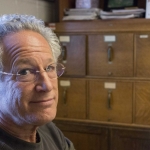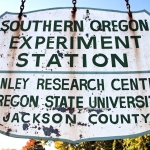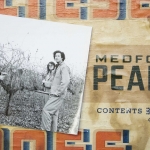Growers and other stakeholders will meet on September 9 at Oregon State University’s Southern Oregon Research and Extension Center near Medford to discuss how a plant pathology research position might be filled.
Dr. David Sugar, who worked primarily on postharvest pear problems, retired from the station in May, leaving OSU with no postharvest plant pathologist anywhere in the state. Dr. Robert Spotts, pathologist at the Mid-Columbia Agricultural Research and Extension Center in Hood River, retired in 2009.
Dr. Stella Coakley, associate dean at OSU’s College of Agricultural Sciences, said filling Sugar’s position is a top priority for the college.
“Postharvest pathology is so enormously important to crops that are stored for a long time, and would be important for cherries as well,” she said. “Plant pathogens, both pre- and postharvest, are one of the most daunting economic limitations to most cropping systems.”
At the September 9 meeting, the university will seek input on major issues facing growers in Southern Oregon, what the research center can do to address them, and what expertise and training Sugar’s successor should have.
Coakley said the state of Oregon has reduced its commitment to agricultural research and extension. Last May, residents of Jackson County voted in favor of a service district to help fund the Southern Oregon Research and Extension Center and retain Sugar’s position.
They will pay a levy of 5 cents per $1,000 of assessed property value, which will generate more than $800,000 annually. Nineteen counties in Oregon have passed service district levies specifically to support OSU extension and research. OSU has 11 branch stations around the state.
“They’re all important to the regions they are in,” Coakley said. “The state’s cutting its commitment, so how do we keep all 11 branch stations available to the regions they serve? We don’t have enough money.
“Stakeholders in each region have been asked to help generate about 25 percent of the base operating costs for a branch station in order to help continue delivery of regionally important research and extension programs.”
Hood River
The pear industry in the Hood River area has been helping to fund research and extension at the Mid-Columbia Agricultural Research and Extension Center for some time, and that’s the reason the positions now held by Drs. Todd Einhorn, Peter Shearer, and Yan Wang were filled.
However, because of continuing cuts in state funding, OSU does not have the luxury of filling all the positions it would like to fill, Coakley said, and Spotts’ position remains vacant. Wang, a plant physiologist, has been working on some decay problems, but is not a pathologist.
When Spotts retired, there was talk of Washington and Oregon stakeholders pooling their resources to fill the pathology position. Coakley said OSU has tried to partner with Washington to fill positions, but there doesn’t seem to be a mechanism to do so. It requires a long-term financial commitment to fund a tenure-track position.
“Our hope would be that the industry in the Mid-Columbia—pears, cherries, and wine—will come up with something that will make it possible for us to put another position in that location,” she said. “The station is very important to us, and the industry is very important to us.”









Leave A Comment